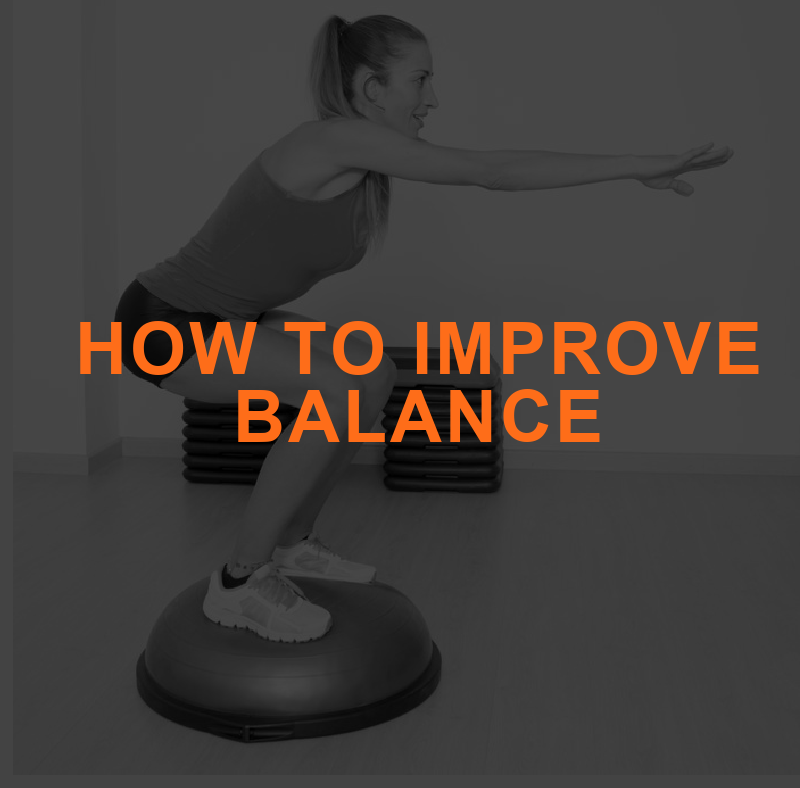
Balance is important in the exercise world and in daily life. Teaching personal training clients how to improve balance can prevent injury, improve their fitness, and positively impact how they function throughout their day.
Many people aren’t aware that their sense of balance isn’t optimal until they start performing balance exercises. Improper balance affects form, posture, and a myriad of mishaps or injuries in the gym.
Incorporating balance exercises into training sessions will help our clients prevent injuries, improve stability, and expose areas where they may need improvement. While this is key in the aging population, it’s also significant to bear in mind for clients of all ages.
Who Needs to Improve Balance?
Absolutely anyone and everyone will benefit from training to improve balance skills. However, certain clients may require a higher degree of control over their balance than others such as:
• Athletes
• Weightlifters
• Runners
• Bike riders
• Mountain climbers
• Hikers
• Dog walkers
• Gymnasts
• Skaters
• Skiers
• Paddleboarders
• Surfers
• Ballet dancers
• Pregnant women
• Young people
• Elderly people
Everybody needs balance.
Learn more in our Functional Training Specialist as a part of our Continuing Education Course Series.

Why is it Important to Improve Balance?
Having a good sense of balance allows us to perform exercises correctly, complete our daily tasks with ease, and ultimately prevents injury. The inner ear, eyesight, and our brain work in sync to help create a sense of balance. The inner ear provides sensory feedback, eyesight visualizes possible obstructions, and the brain processes all of it. Keeping fit magnifies the sense of balance through body awareness and strong muscles that provide the necessary support.
Yoga, gymnastics, tai chi, qigong, and balance exercises in the gym are all avenues to improve and maintain balance.
Injury Prevention
Yesterday, I heard the clanging of weights as I glanced over to see a guy bench pressing without securing the plates while lifting off balance. The left side was lifted higher than the right. In slow motion, the right weights slipped, then left, back to right, etc. Securing the weights is imperative, folks!
However, if he had watched how he lifted to ensure the weights were equally balanced, he may have prevented this gym mishap. (Additionally, many muscle imbalances aren’t visible until a lift begins, and a situation like this may reveal such.)
Quick recovery associated with strong balance can stop an accident before it happens, or simply reduce the impact of injury. Recently, I went to open my car’s back door to retrieve something, not realizing my daughter was leaning on the door as I opened it. Fortunately, she immediately reacted, corrected quickly, balanced her seating, and managed to lean back into the car instead of falling out. Perhaps her skills developed as a yoga instructor created a huge advantage for her.
Another anecdote– a client of mine was hurrying down a flight of stairs in her home and missed a step. Luckily, the training to improve balance paid off and she recovered without harm, catching herself before falling.
Exercise Performance
Athletes are more agile in their respective sports once they master balance. Football players, soccer teams, and many others often cross-train in yoga and ballet. The element of balance in their training coupled with increased flexibility is a recipe for better performance.
Training for balance not only improves proprioception, which helps to hone skills in many sports and activities, but it also strengthens the smaller muscle groups and stabilizing tissues around the joints. Creating this additional supportive strength will bolster overall strength and the ability to master many complex movements. Further, increased joint strength will help prevent injuries and improve recovery time when injuries do occur.
How To Incorporate Balance Training
I, personally, use at least one balancing exercise in every training session for my clients and even myself. There are many ways to train for balance. Here are nine simple exercises to consider:
- Simply stand and balance on one leg, especially to start.
- Perform exercises on one leg.
- Place a yoga block on top of the head while performing exercises including farmer’s walk, lunges, and squats.
- Place a yoga block on the back for floor exercises like bird dogs, planks, and crawls.
- Closing the eyes forces clients to focus on balance and form.
- Practice yoga balance poses like chair pose, airplanes, and side planks.
- Train advanced clients to do handstands, crow pose, or shoulder stands.
- Use mirrors to ensure weights are level, stance is evenly distributed, and form is aligned according to the specific exercise.
- Incorporate balance equipment when possible: stability ball, discs, BOSU ball, yoga blocks, suspension cables, and bender balls.
Whether we are training for a big tournament, carrying a tray of glasses, holding a baby, walking on uneven turf, or climbing a mountain, a strong and steady sense of balance will create more ease in anything our clients attempt to accomplish.
References:
https://www.yogajournal.com/poses/types/balancing/
https://www.heart.org/en/healthy-living/fitness/fitness-basics/balance-exercise#:~:text=Having%20good%20balance%20is%20important,older%20adults%20and%20stroke%20patients.&text=Often%20we%20are%20not%20fully,until%20we%20try%20balance%20exercises.\
https://www.health.harvard.edu/healthbeat/body-and-brain-are-crucial-to-good-balance







